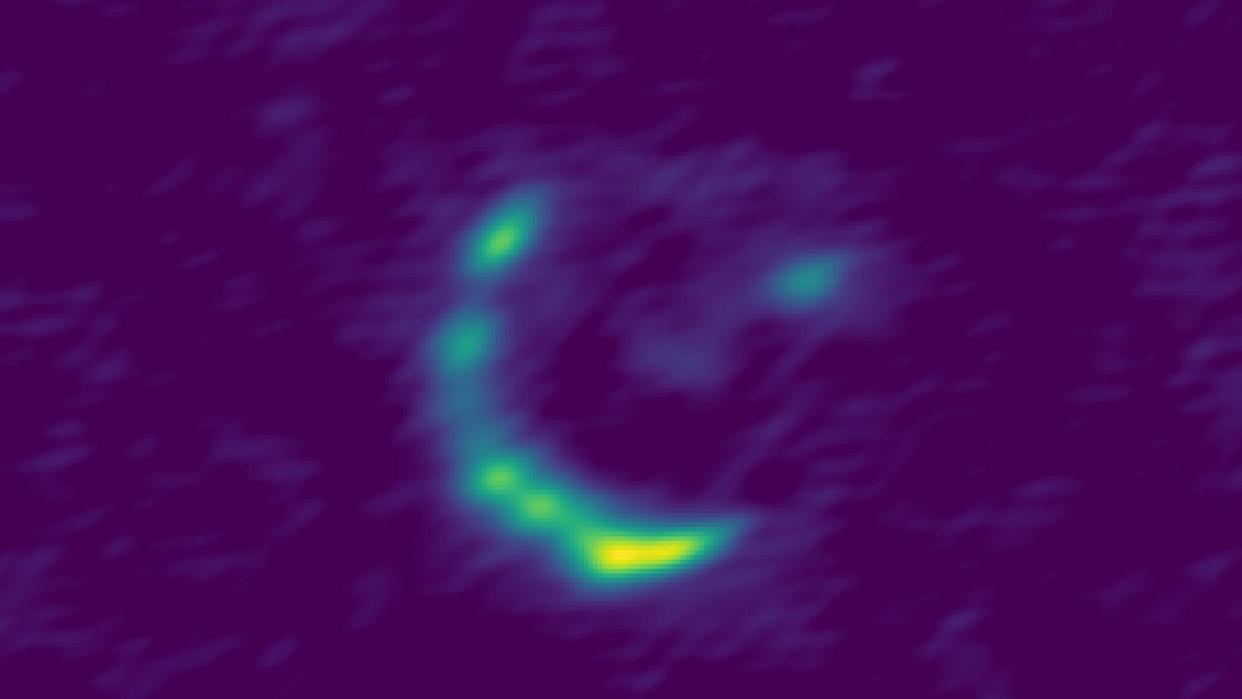Scientists reveal 'invisible' galaxy from the early universe, using space-time trick predicted by Einstein

- Oops!Something went wrong.Please try again later.
Researchers have finally revealed the details of an extremely distant and dark galaxy that's been nearly impossible to see — until now.
The young, star-forming galaxy is filled with dust and gas, and formed 2 billion years after the Big Bang, the researchers report — an era more than 11 billion years ago, when the universe was about one-sixth its current size. Dim, distant and choked with dust, the object is nearly invisible in every wavelength of light. However, a trick of gravity initially predicted by Albert Einstein has given researchers a rare look at the "invisible" galaxy. The team's findings were published Feb. 3 in The Astrophysical Journal.
"Very distant galaxies are real mines of information about the past and future evolution of our universe," lead author Marika Giulietti, an astrophysicist at the International School of Advanced Studies in Italy (SISSA), said in a statement. "However, studying them is very challenging. They are very compact and therefore difficult to observe. Also, because of distance, we receive very weak light from them."
The team took advantage of Einstein's theory of general relativity to observe the distant galaxy. The theory says that massive objects — like galaxies or, sometimes, individual stars — distort the space around them, so any light passing by gets magnified. This means that researchers can use massive objects as a cosmic magnifying glass to view other, more distant objects, but only when they line up just right. The effect, known as gravitational lensing, has helped astronomers view some of the earliest galaxies in the universe.
Because of the vast amount of interstellar dust in the way, however, this particular galaxy was hard to see, even with gravitational lensing. So the researchers turned to the Atacama Large Millimeter/submillimeter Array (ALMA), a set of 66 radio telescopes in Chile. Because of the way dust absorbs and reemits light, submillimeter telescopes are often used to observe dusty celestial bodies.
ALMA peered through the dust to reveal a young, active galaxy that's forming stars at 1,000 times the rate of the Milky Way.
Related stories
—Stephen Hawking's most far-out ideas about black holes
—8 ways we know that black holes really do exist
—The 18 biggest unsolved mysteries in physics
"Distant galaxies that are young, compact, characterized by vigorous star formation, and largely obscured by dust, and that possess a very rich reservoir of molecular gas, are forerunners of the massive quiescent galaxies that we see in the local universe,” study co-author Andrea Lapi, also an astrophysicist at SISSA, said in the statement. These galaxies "provide very valuable insights into the processes leading to the formation and evolution of these structures during the history of the Cosmos."
Although ALMA could only reveal so much about this young galaxy, observatories such as the James Webb Space Telescope could one day unveil the galaxy in greater detail, Lapi added. Studying galaxies like these helps scientists understand the early universe and how galaxies like our own evolve.

